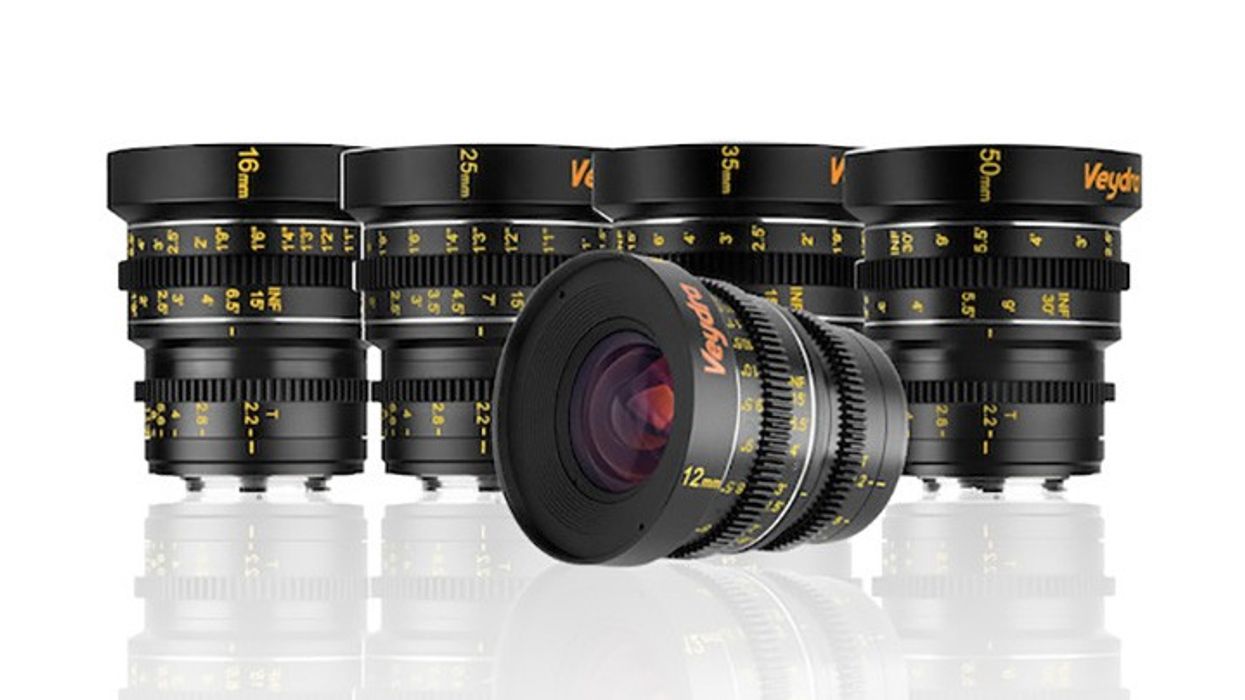Veydra Smashes Zeiss CP.2s in New Tests by LensRentals
Small lens manufacturer Veydra proves that great things can come in small packages.

No Film School doesn't typically dwell on Modulation Transfer Function—a method of measuring the sharpness of a lens—too much, as there are a number of factors that go into the overall sharpness of an image (for instance, the resolution of the sensor and the display).
Our preferred way of evaluating lenses has remained a discussion of how the images they craft look as part of a whole system (which is why we generally mention what camera we mounted the lens to). Other factors we include are how the lenses feel in your hand and what kind of images you can create with them.
This being said, MTF is a great tool because it is objective. If you want to evaluate the optical design of a lens—or even more interestingly, the manufacturing consistency of a line of lenses—MTF can be a great resource.
Our interest was piqued upon coming across a recent post on the LensRentals blog that provided a detailed breakdown of MTF for the inexpensive, small, lightweight, "indie" Veydra mirrorless lenses. The blog compares them to the Zeiss CP.2 lenses that have been very popular with indie shooters. By objective measurements, the $999/lens Veydras blow the Zeiss CP.2s out of the water.
What's exactly going on here? LensRentals doesn't speculate (their whole post is about removing pre-conceptions and doing empirical testing), but we have a few theories.
First, the CP.2s has some features that are lacking in the Veydra line, i.e. more lens mount options and a larger image circle. The lenses are only seven years old and, frankly, resolutions have taken off quite a bit over that time. For example, a lens designer in 2011 might be willing to sacrifice a bit of sharpness for more flexibility in other areas of the design. Why? Because the lenses were originally intended for 1080p production, with the idea that if you were going 4K (which would only have been on a RED back then), the Ultra or Master primes might be a better fit.
In addition, the CP.2s have a deeper flange focal distance and an interchangeable lens mount that cover the massive full-frame sensor. None of that explains the lens-to-lens inconsistency—a problem most "cheaper" lenses face—and to be fair, we suppose the CP.2 is rather cheap in Zeiss' lineup.
This is a fascinating test and a great reminder of the benefits of targetted engineering. By choosing a flexible, future-proof" do-everything-on-any-mount" lens, you may be getting better lens performance than by going for a dedicated tool that only has one job and does it well.
Check out LensRentals blog for more in-depth coverage of how impressive the little Veydra lenses can really turn out to be.












